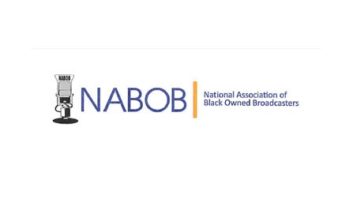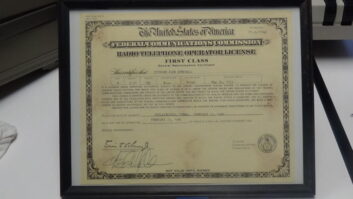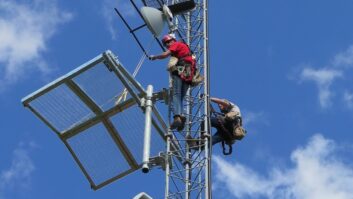A group representing 76 black-owned AM radio stations in the United States is pressing the Federal Communications Commission to get moving and eliminate skywave protection for Class A stations on the band.

James Winston “Elimination of Class A skywave protection and allowing Class D stations the opportunity to receive some amount of nighttime service, and allowing Class B stations to improve their nighttime service, will be an enormous benefit to the communities served by those stations,” wrote James L. Winston, president of the National Association of Black-Owned Broadcasters.
NABOB has long favored this change but he sent the letter to FCC Chairman Wheeler and the other commissioners, urging action now as part of the commission’s ongoing AM revitalization initiative.
Winston didn’t mention the outcome of the recent presidential election; but his Nov. 17 letter to a Democratic chairman of the commission could be taken as a plea for action before a change of administration.
Yet it also comes as Republican legislators have pressed the FCC not to act on contentious issues during the lame-duck period at the end of the Obama administration. Will an FCC under President Trump be more or less open to more AM revitalization in general, and to this change to the AM band in particular? That’s hard to say, given that the AM revitalization push has had support from both sides of the commission’s political aisle and that Republican Commissioner Ajit Pai — whose influence on the FCC can only increase come January — is probably its biggest proponent.
What Winston is asking for is what the FCC actually has already tentatively concluded but has yet to enact: Class A stations should be protected, day and night, to the 0.1 mV/m groundwave contour, from co-channel stations; they also should continue to be protected to the 0.5 mV/m groundwave contour, day and night, from first-adjacent stations; and critical hours protection of Class A stations should be eliminated.
NABOB noted that several organizations, “primarily licensees of Class A stations,” oppose the changes, partly on technical grounds; but it pointed to filings by Carl T. Jones Corp. and Hatfield & Dawson Consulting Engineers to the effect that technical objections to elimination of skywave protection are “unfounded.”
Of the 76 AMs represented by the association, none is Class A, while almost half are Class D — daytimers that operate on the same frequencies as high-powered Class As and must make way for the latter’s nighttime signals. The association argues that any rationale for such protection is long gone; that these rules block many local stations from serving their own communities at night; and that skywave protection rules prevent many Class Bs from improving their night signals. Others who support the change have made similar arguments to the FCC.
But another consideration, Winston suggested, are the historical limitations on minorities in entering the media business. He said that when Class A licenses were doled out in the first half of the 20th century, African Americans could not fully participate in society; by the time they could enter the industry, “it was often through ownership of less valuable stations,” particularly Class D daytimers.












